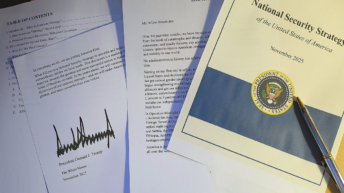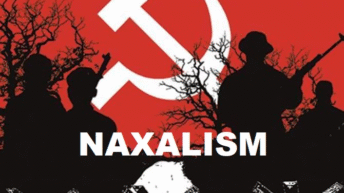
Pakistan is approaching a moment of reckoning. What was once considered South Asia’s geopolitical fulcrum now finds itself battered by internal fragmentation, economic collapse, and ideological confusion. With Chief of Army Staff General Asim Munir tightening his grip, Islamabad is responding to the crisis with a familiar playbook: stoking conflict with India, appealing to religious nationalism, and leaning heavily on China. But the old formulas are yielding diminishing returns — and the costs are rising.
The April 2025 terrorist attack in Pahalgam, India — which killed 26 civilians — was immediately claimed by the LeT-backed TRF. Interestingly, TRF was explicitly defended by Pakistan’s Foreign Minister in the UN, as per his statement in the National Assembly, acknowledging ties to Pakistan-based groups. This attack is a tragic reminder of Pakistan’s persistent use of asymmetric warfare against India. It may have been designed to revive the Kashmir issue internationally, distract from domestic instability, and bolster the military’s narrative of existential threat. But such provocations are increasingly seen by the international community not as signs of strategic deftness, but of desperation.
Beneath the noise lies a deeper crisis: the erosion of Pakistan’s national identity, the decline of civilian authority, and the growing irrelevance of an ideological framework that no longer reflects the country’s complex realities.
The Two-Nation Theory Is Collapsing Under Its Own Weight
The ideological cornerstone of Pakistan — the Two-Nation Theory — claimed that Muslims and Hindus were separate civilisations unable to coexist. Yet, more than seven decades later, this premise is crumbling. The secession of East Pakistan in 1971, the persistent insurgency in Balochistan, and growing alienation among Sindhis and Pashtuns point to the failure of a religiously defined nationalism to provide cohesion.
Rather than forging unity, this ideology now fuels exclusion, suppresses diversity, and empowers a military-led state to define loyalty in religious terms. Pakistan has become a federation in name only — held together by coercion rather than consent.
The Army: Dominant Yet Increasingly Adrift
The most enduring institution in Pakistan is its military. Since independence, it has remained the central actor in statecraft — often at the expense of democracy. Civilian governments have been overthrown, co-opted, or neutralised with alarming regularity. From Ayub Khan to Pervez Musharraf to today’s General Asim Munir, the military has shaped Pakistan’s external strategy and domestic power structure.
General Munir, a former intelligence chief and devout Hafiz-e-Quran, governs through a mix of authoritarianism and religious signaling. His speeches to the diaspora evoke Islamic imagery and revive the rhetoric of jihad and existential conflict. But in doing so, he risks transforming the army from a professional force with colonial and modernist traditions into one that leans toward becoming an Islamic army under Sharia.
This raises critical questions. If Pakistan embraces a religious-political identity, who commands greater authority — the general in Rawalpindi or the Taliban emir in Kandahar? The Afghan Taliban’s rejection of the Durand Line and the Pakistani Taliban’s resurgence suggest that religious legitimacy is contested — even within the ideological space Pakistan’s military seeks to control.
Strategic Depth as Strategic Folly
For decades, Pakistan has sought “strategic depth” through militant proxies — in Afghanistan, Kashmir, and beyond. But this doctrine has produced strategic isolation rather than depth. From Lashkar-e-Taiba to Jaish-e-Mohammed, the use of non-state actors has drawn global condemnation and pushed Pakistan into a diplomatic corner.
The Pahalgam attack falls in this pattern. After Prime Minister Narendra Modi’s 2015 visit to Lahore signaled a diplomatic thaw, the Pathankot attack swiftly followed. Pakistan’s military has consistently undermined civilian diplomacy, maintaining a state of controlled hostility with India to justify its domestic dominance. But such tactics now yield diminishing returns. India’s global standing has only grown, while Pakistan’s actions further alienate potential partners.
Munir’s invocation of Kashmir as the country’s “jugular vein” and use of Quranic verses to energise the diaspora may rally hardliners, but it alienates secular and liberal Pakistanis — especially those abroad who have distanced themselves from the state’s radical turn.
Economic Decay and the CPEC Mirage
Economically, Pakistan is teetering. Foreign reserves are nearing exhaustion, inflation is in double digits, and bailouts from the IMF, China, and the Gulf have provided only temporary relief. The once-vaunted China-Pakistan Economic Corridor (CPEC), part of Beijing’s Belt and Road Initiative, has delivered little in terms of sustainable growth. Instead, it has bred debt dependency, deepened provincial resentments, and become a lightning rod for attacks by local rebels in restive Balochistan.
Pakistan’s reliance on China is also ideologically fraught. For Islamabad’s radical Islamist groups, Beijing — with its atheist leadership and brutal repression of Uyghur Muslims — is hardly a natural ally. This tension is already visible in the occasional terror attacks on Chinese nationals and growing unease among Islamists.
China, meanwhile, may reassess its exposure. With a resurgent Donald Trump pushing isolationist trade policies, Beijing is under pressure to preserve its access to larger markets — notably India, the European Union, and Southeast Asia. Supporting a failing Pakistani client state run by a fundamentalist general could derail China’s efforts to normalise ties with New Delhi, whose $130 billion consumer market vastly outweighs the strategic utility of a debt-ridden ally.
The Western Border Unravels
While Pakistan’s strategic doctrine focuses eastward, its western frontier is increasingly unstable. The Afghan Taliban’s refusal to recognise the Durand Line and the resurgence of the Tehrik-i-Taliban Pakistan (TTP) are straining Islamabad’s control in tribal areas. Attacks on Pakistani security forces are growing, and the state’s inability to enforce its writ in these regions is becoming evident.
In Balochistan, the insurgency continues to simmer. Militants target state infrastructure and Chinese assets with regularity. Islamabad’s response — primarily military — has failed to address the underlying political grievances. This continued securitisation raises the risk of long-term fragmentation.
A Disillusioned Diaspora
Pakistan’s overseas population, long a source of economic support through remittances, is increasingly estranged. Many expatriates see no future in investing in a country plagued by extremism, censorship, and economic instability. General Munir’s religious overtures may play well with conservative pockets, but for the broader diaspora — especially professionals in the West — such rhetoric only reinforces their disillusionment.
A State at a Crossroads
Pakistan today faces not just a political or economic crisis, but a deeper existential one. Its ideological foundations are crumbling, its governance model is unsustainable, and its strategic doctrine is outdated. The military remains the dominant force, but it is increasingly isolated — both within Pakistan and globally.
For India, the challenge is how to deal with a fragmented nuclear neighbor where command and control are increasingly opaque. In China, the risk stems from backing a religiously charged regime that threatens regional stability, and for the global community, the danger lies in the slow, volatile decline of a state armed with nuclear weapons and driven by crisis-driven militarism.
Pakistan must urgently rethink its identity, its civil-military compact, and its place in the international system. Without that reckoning, it may end in slow-motion implosion — one that could reverberate far beyond South Asia.






Add comment